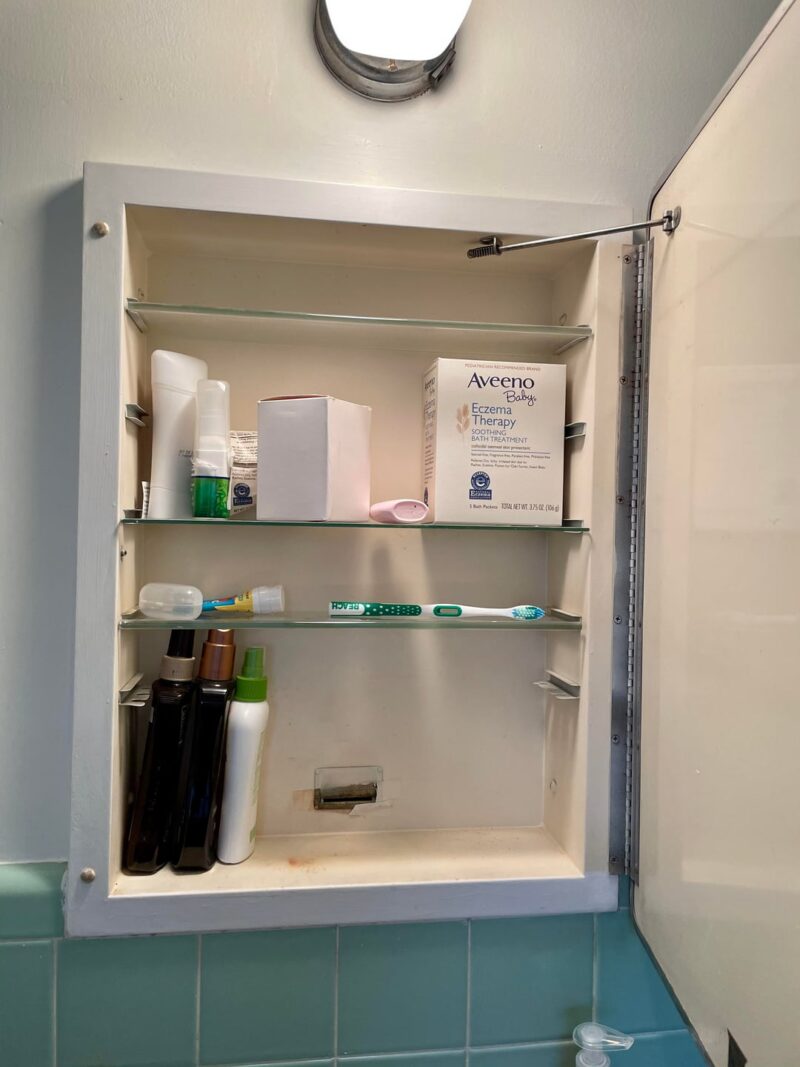
I did a piece on Gillette last week and my friend, Hal Hurka, asked if I remembered the slots in the back of medicine cabinets where we once put used blades.Hal said that during his remodeling days, he came across lots and lots of old blades stashed in the backs of cabinets. I did remember and it brought back memories.
Why did people put them there?
Because when folks back in the days of Gillette Blue Blades discarded the used blades in the trash, nasty cuts happened. At the time, there were no safe ways to dispose of sharp blades, and trash cans were not designed to handle hazardous waste. These slots offered a practical solution before modern safety standards and recycling programs were established. Many homeowners today are shocked to discover piles of rusty blades during renovations, providing a fascinating glimpse into past household habits and forgotten design norms.
After a fellow named King C. Gillette came out with a safety razor that used thin, inexpensive, and disposable razor blades, the problem arose. Children were finding the blades in waste cans and trash collectors threatened to walk off the job. So between 1930 and the early 1970’s, cabinet makers put a compartment behind the backs of the medicine cabinets in which to simply drop the blades.
And those thin blades were razor sharp – at first. But after a couple shaves, they became too dull for whiskers but still sharp enough to cut skin. I can remember my first shave and having to put dabs of toilet paper on my face to stop the bleeding. I also remember styptic pencils which we used to stop bleeding. They still make them, by the way.
Gillette Blue Blades began a rapid decline when plastic, disposable razors hit the market. They were safer and stayed sharper longer. Some of today’s razors have five blades – in case the first four aren’t paying attention. But few are as sharp as was a Blue Blade right out of the box – and when they were through shaving, they absolutely belonged in the backs of cabinets.
Razor Blade Slots in Cabinets
I did a piece on Gillette last week and my friend, Hal Hurka, asked if I remembered the slots in the backs of bathroom cabinets where we once put used blades. Hal said that during his remodeling days, he came across lots and lots of old blades stashed in the backs of cabinets. I did remember and it brought back memories.
Why did people put them there?
Because when folks back in the days of Gillette Blue Blades discarded the used blades in the trash, nasty cuts happened. At the time, there were no safe ways to dispose of sharp blades, and trash cans were not designed to handle hazardous waste. These slots offered a practical solution before modern safety standards and recycling programs were established. Many homeowners today are shocked to discover piles of rusty blades during renovations, providing a fascinating glimpse into past household habits and forgotten design norms.
After a fellow named King C. Gillette came out with a safety razor that used thin, inexpensive, and disposable razor blades, the problem arose. Children were finding the blades in waste cans and trash collectors threatened to walk off the job. So between 1930 and the early 1970’s, cabinet makers put a compartment behind the backs of the medicine cabinets in which to simply drop the blades.
And those thin blades were razor sharp – at first. But after a couple shaves, they became too dull for whiskers but still sharp enough to cut skin. I can remember my first shave and having to put dabs of toilet paper on my face to stop the bleeding. I also remember styptic pencils which we used to stop bleeding. They still make them, by the way.
Gillette Blue Blades began a rapid decline when plastic, disposable razors hit the market. They were safer and stayed sharper longer. Some of today’s razors have five blades – in case the first four aren’t paying attention. But few are as sharp as was a Blue Blade right out of the box – and when they were through shaving, they absolutely belonged in the backs of cabinets.

